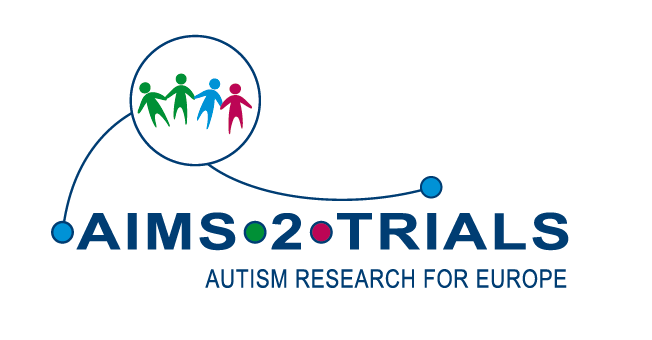Over the last decade, researchers have worked hard to identify reliable ways to measure and track the emergence and progression of autism. One promising area of focus has been exploration of how autistic people focus their attention on social cues.
Our research
 In this study, AIMS-2-TRIALS researchers investigated the way that autistic and non-autistic people look at pictures of people. Over 20 seconds of viewing, people’s gaze tended to focus on faces and then progressively move away to other areas of a scene. This pattern was similar for both autistic and non-autistic children. However, in older age groups, for example between adolescence and adulthood, non-autistic people were likely to look back at the face after several seconds, whereas autistic people were less likely to do so.
In this study, AIMS-2-TRIALS researchers investigated the way that autistic and non-autistic people look at pictures of people. Over 20 seconds of viewing, people’s gaze tended to focus on faces and then progressively move away to other areas of a scene. This pattern was similar for both autistic and non-autistic children. However, in older age groups, for example between adolescence and adulthood, non-autistic people were likely to look back at the face after several seconds, whereas autistic people were less likely to do so.
At the individual level, autistic people whose gaze pattern was most similar to the average gaze pattern scored higher on a measure of communication skills. In contrast, a small subgroup of autistic people withdrew their gaze from faces more abruptly, and these people tended to score more highly on a measures of autism symptoms, specifically the Social Responsiveness Scale 2 (SRS-2), which covers areas from eye-contact to coordination and self-confidence.
These differences support the idea that autistic and non-autistic people differ in terms of social attention; they focus differently on visual sources of information relevant to communication, such as other people’s faces and eyes. This can be used as an objective indicator of the difficulties many autistic people experience in social interactions.
New technology
This research has been made possible by capitalising on the high quality of eye-tracking technology, particularly its ability to look in great detail at small moments of time: instead of measuring overall ‘looking time’ per person, researchers were able to examine the proportion of time that gaze remained on faces from start to end, from second to second. They then modelled its probability of change based on diagnosis and age.
Why is this useful?
These results support other evidence that differences in social attention emerge later than previously theorised and so, rather than being an early-emerging trait, may develop as a result of interacting with the world as an autistic person. If this evidence gains further validation, it might contribute to improved diagnosis, significantly changing the way people are diagnosed between childhood and adulthood, as well as offering a tool for tracking individuals’ change over time.
Del Bianco, T., Mason, L., Charman, T., Tillman, J., Loth, E., Hayward, H., Shic, F., Buitelaar, J., Johnson, M.H., Jones, E.J. and the EU-AIMS LEAP Group (2020). Temporal profiles of social attention are different across development in Autistic and Neurotypical people. Biological Psychiatry: Cognitive Neuroscience and Neuroimaging. Published 12th September, 2020.
Background
Over the last decade, researchers have worked hard to identify reliable ways to measure and track the emergence and progression of autism. One promising area of focus has been exploration of how autistic people focus their attention on social cues.
Our research
 In this study, AIMS-2-TRIALS researchers investigated the way that autistic and non-autistic people look at pictures of people. Over 20 seconds of viewing, people’s gaze tended to focus on faces and then progressively move away to other areas of a scene. This pattern was similar for both autistic and non-autistic children. However, in older age groups, for example between adolescence and adulthood, non-autistic people were likely to look back at the face after several seconds, whereas autistic people were less likely to do so.
In this study, AIMS-2-TRIALS researchers investigated the way that autistic and non-autistic people look at pictures of people. Over 20 seconds of viewing, people’s gaze tended to focus on faces and then progressively move away to other areas of a scene. This pattern was similar for both autistic and non-autistic children. However, in older age groups, for example between adolescence and adulthood, non-autistic people were likely to look back at the face after several seconds, whereas autistic people were less likely to do so.
At the individual level, autistic people whose gaze pattern was most similar to the average gaze pattern scored higher on a measure of communication skills. In contrast, a small subgroup of autistic people withdrew their gaze from faces more abruptly, and these people tended to score more highly on a measures of autism symptoms, specifically the Social Responsiveness Scale 2 (SRS-2), which covers areas from eye-contact to coordination and self-confidence.
These differences support the idea that autistic and non-autistic people differ in terms of social attention; they focus differently on visual sources of information relevant to communication, such as other people’s faces and eyes. This can be used as an objective indicator of the difficulties many autistic people experience in social interactions.
New technology
This research has been made possible by capitalising on the high quality of eye-tracking technology, particularly its ability to look in great detail at small moments of time: instead of measuring overall ‘looking time’ per person, researchers were able to examine the proportion of time that gaze remained on faces from start to end, from second to second. They then modelled its probability of change based on diagnosis and age.
Why is this useful?
These results support other evidence that differences in social attention emerge later than previously theorised and so, rather than being an early-emerging trait, may develop as a result of interacting with the world as an autistic person. If this evidence gains further validation, it might contribute to improved diagnosis, significantly changing the way people are diagnosed between childhood and adulthood, as well as offering a tool for tracking individuals’ change over time.
Del Bianco, T., Mason, L., Charman, T., Tillman, J., Loth, E., Hayward, H., Shic, F., Buitelaar, J., Johnson, M.H., Jones, E.J. and the EU-AIMS LEAP Group (2020). Temporal profiles of social attention are different across development in Autistic and Neurotypical people. Biological Psychiatry: Cognitive Neuroscience and Neuroimaging. Published 12th September, 2020.







